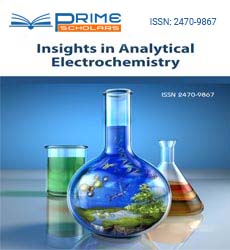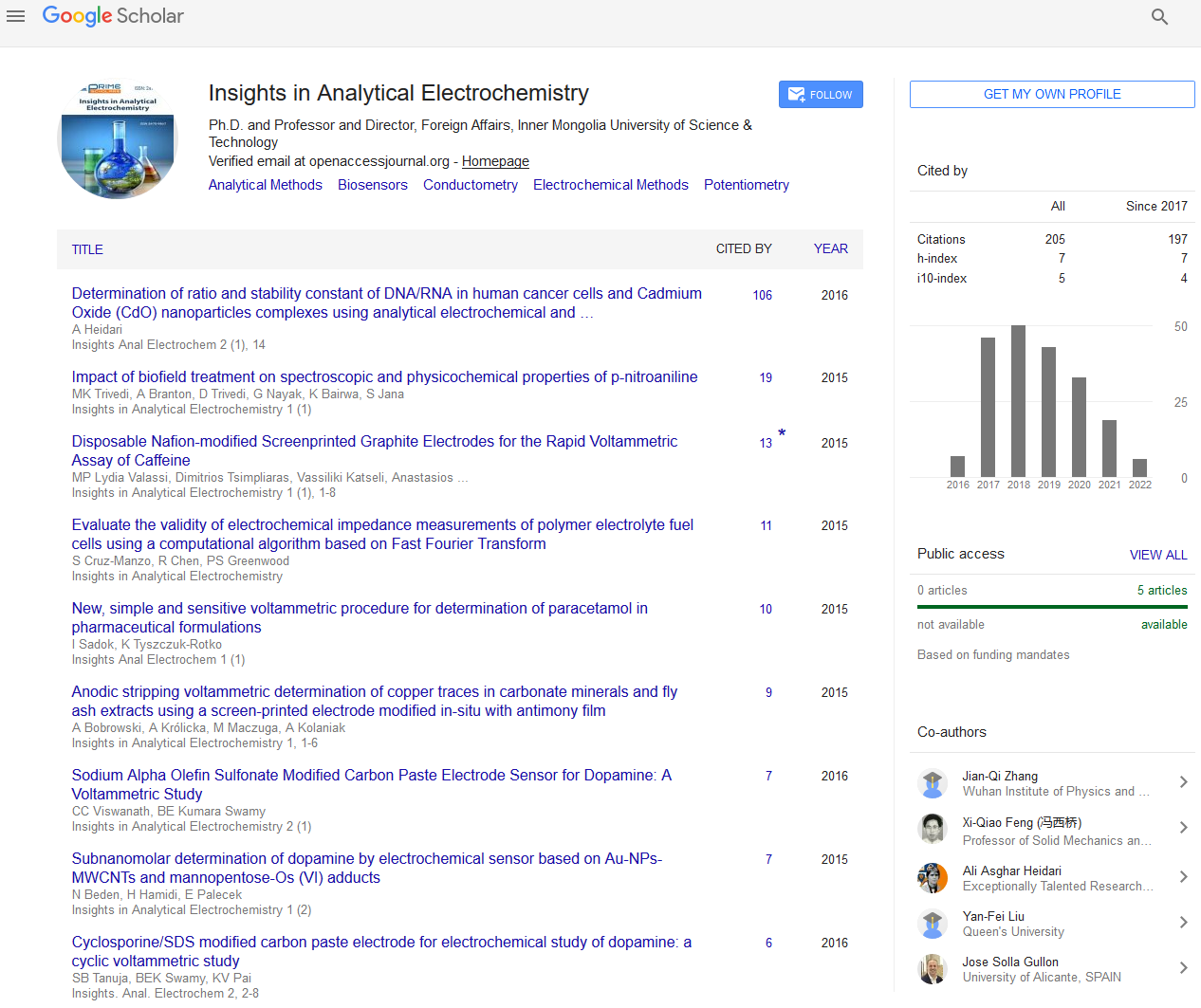Commentary - (2022) Volume 8, Issue 2
Use of Biosensors in Various Field of Biomedical Exploration
Alexander Schlaich*
Department of Chemistry, University of Sydney, Australia
*Correspondence:
Alexander Schlaich, Department of Chemistry, University of Sydney,
Australia,
Email:
Received: 02-Mar-2022, Manuscript No. ipaei-22-13119;
Editor assigned: 04-Mar-2022, Pre QC No. ipaei-22-13119 (PQ);
Reviewed: 18-Mar-2022, QC No. ipaei-22-13119;
Revised: 23-Mar-2022, Manuscript No. ipaei-22-13119;
Published:
30-Mar-2022, DOI: 10.21767/2470-986-8.2.6
Description
Biosensors are these days omnipresent in biomedical finding as
well as a wide scope of different regions, for example, reason
behind care checking of therapy and infection movement, ecological
observing, food control, drug revelation, crime scene investigation
and biomedical exploration. A wide scope of methods
can be utilized for the improvement of biosensors. Their
coupling with high-liking biomolecules permits the touchy
and specific location of a scope of analytes. We give an overall
prologue to biosensors and biosensing innovations, including
a short recorded outline, presenting key improvements in the
field and representing the expansiveness of biomolecular detecting
methodologies and the extension of nanotechnological
approaches that are currently accessible. Basic use of biosensors
has gained fundamental significance in the field of medication
revelation, biomedicine, sanitation norms, protection,
security, and natural checking. This has prompted the development
of exact and strong insightful instruments involving
organic detecting component as biosensor. Glucometers using
the procedure of electrochemical recognition of oxygen or hydrogen
peroxide utilizing immobilized glucose oxidase anode
cultivated the revelation of biosensors. Late advances in organic
procedures and instrumentation including fluorescence tag
to nanomaterials have expanded the touchy furthest reaches
of biosensors. A portion of the well known fields carrying out
the utilization of biosensors are food industry to keep a mind
its quality and wellbeing, to help recognize the regular and
counterfeit; in the aging business and in the saccharification
cycle to distinguish exact glucose fixations; in metabolic designing
to empower in vivo observing of cell digestion. Biosensors
and their part in clinical science including beginning phase
location of human interleukin-10 causing heart infections,
quick discovery of human papilloma infection, and so on are
significant viewpoints. A biosensor commonly comprises of a
bio-receptor, transducer part and electronic framework which incorporates a sign enhancer, processor and show. Transducers
and hardware can be joined, e.g., in CMOS-based microsensor
frameworks. The acknowledgment part, frequently called a
bioreceptor, utilizes biomolecules from organic entities or receptors
displayed after natural frameworks to associate with
the analyte of interest. The main examination to check the
beginning of biosensors was done by Leland C. Clark. For his
investigation, Clark utilized platinum (Pt) cathodes to identify
oxygen. He set the catalyst glucose oxidase (GOD) extremely
near the outer layer of platinum by catching it against the anodes
with a piece of dialysis film. The protein movement was
adjusted by the encompassing oxygen fixation. In clinical applications
biosensors are for the most part ordered as in vitro and
in vivo frameworks. An in vitro, biosensor estimation happens
in a test tube, a culture dish, a microtiter plate or somewhere
else outside a living creature. The sensor utilizes a bioreceptor
and transducer as illustrated previously. An illustration of an
in vitro biosensor is a compound conductimetric biosensor for
blood glucose observing. There is a test to make a biosensor
that works by the rule of reason behind care testing, for example
where the test is required. Future work ought to zero
in on explaining the component of collaboration among nanomaterials
and biomolecules on the outer layer of cathodes or
nanofilms and utilizing novel properties to create another age
of biosensors. By and by, nanomaterial-based biosensors show
extraordinary alluring possibilities, which will be comprehensively
applied in clinical finding, food investigation, process
control, and natural checking sooner rather than later.
Acknowledgement
None.
Conflict of Interest
The author declares there is no conflict of interest in publishing
this article.
Citation: Schlaich A (2022). Use of Biosensors In various Field of Biomedical Exploration. Insights Anal Electrochem. 8:006.
Copyright: © Schlaich A. This is an open-access article distributed under the terms of the Creative Commons Attribution License,
which permits unrestricted use, distribution, and reproduction in any medium, provided the original author and source are
credited.

